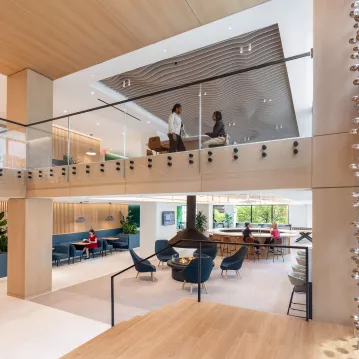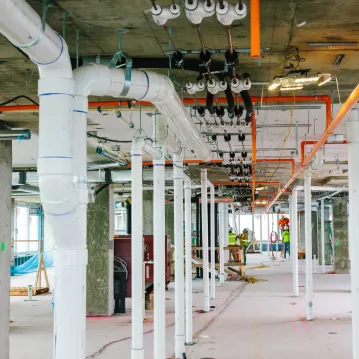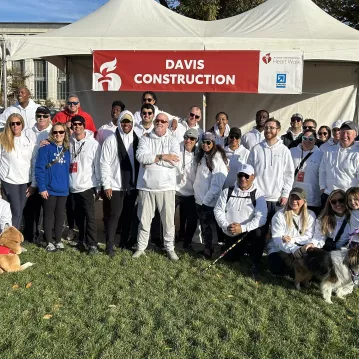Increasing Safety Requirements for Rising Construction Heights
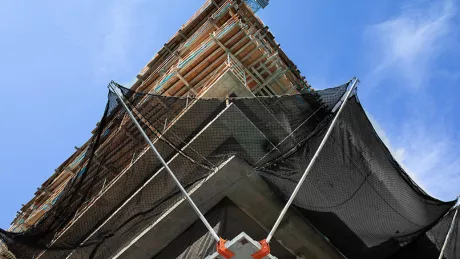
While the Height of Building Act of 1910 remains in place for the District, the past 10 years have seen rising building heights of construction in both nearby Maryland and Virginia. But with this increase in density and development opportunity comes an increase in safety hazards on and around active construction sites. And frankly, the jurisdictional safety requirements haven’t kept up with neighboring metropolitan areas.
We're putting voluntary measures into place across all three local jurisdictions to enhance our project safety measures and mitigate the safety risks to every person who interacts with our project sites. These overhead and fall protection systems include the following.
Debris net systems
Materials and tools often fall from heights on construction sites due to a number of reasons: material handling, weather, and sometimes simple human error. When side and overhead protection methods are combined, two layers of defense are created between the construction site and worker/pedestrian traffic below.
Outrigger (overhead protection): In addition to providing debris containment and overhead protection for workers and pedestrians underneath, an outrigger system also acts as a means of secondary fall protection. For this type of system, a net attached to poles is extended 15 feet out from the side of a building to act as a safety net. When work is completed for the day, the system can be easily retracted up against the building.
Curtain (side protection): This system is made of moveable net partitions that span the entire slab to slab height, and the perimeter of each floor’s footprint. Installed on each floor as the concrete is poured, this measure protects objects from leaving the building envelope.
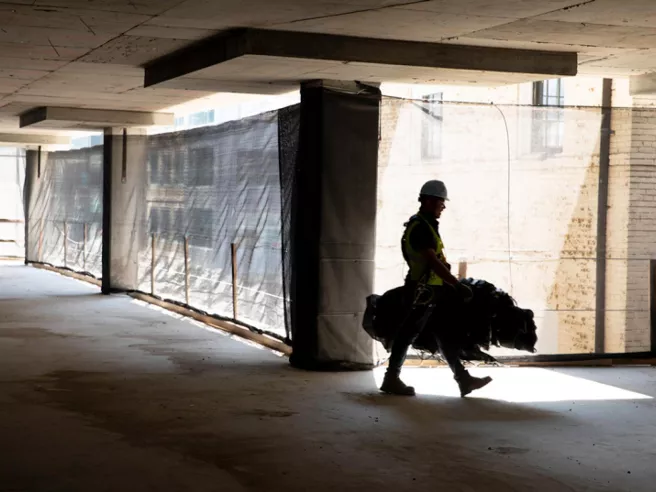
While commonly found in other cities around the country, they are only seen at a limited number of project sites here in the region, including 2100 L Street.
This system is a game changer for our base building projects. It is a great feeling knowing these systems are in place as our last line of defense.
- Brian McIntire, Superintendent, DAVIS
Elevator shaft protection
The standard industry practice for safety surrounding open elevator shafts during construction consists of simple, wooden guardrails. But throughout the duration of construction, these pieces are often removed and reinstalled thereby weakening their effectiveness to protect against a fall.
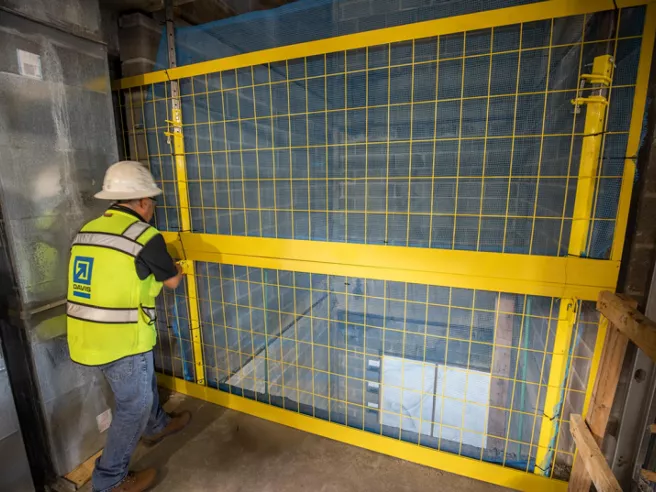
At 1906 Reston Metro Plaza, these pieces of lumber are being replaced with removable metal mesh guardrail panels that can be safely removed for access without jeopardizing stability.
These measures further strengthen us as a leader in building public awareness, surpassing safety standards, and setting higher expectations for the region. We ultimately foresee these systems being used on all projects in the DMV to provide the best protection available, required or not.
To learn more about how DAVIS is redefining the construction experience through safety, click here or contact Dave Chandler, vice president — safety + quality at (301) 255-2171.

